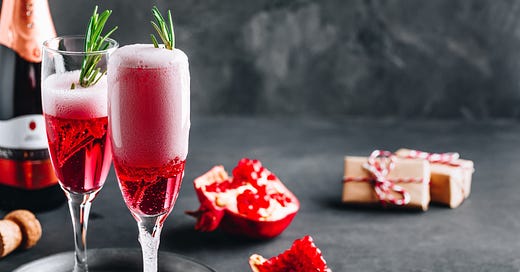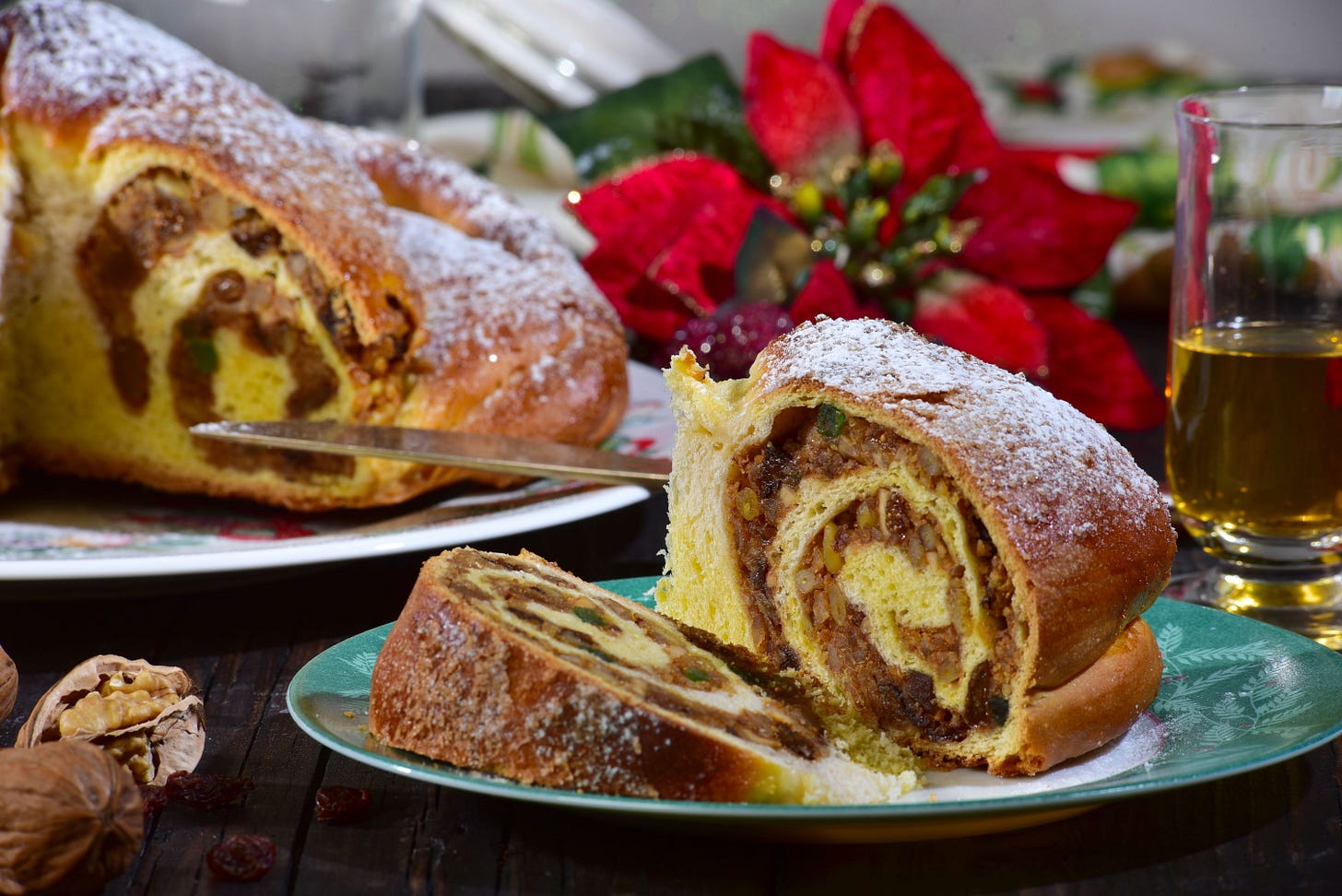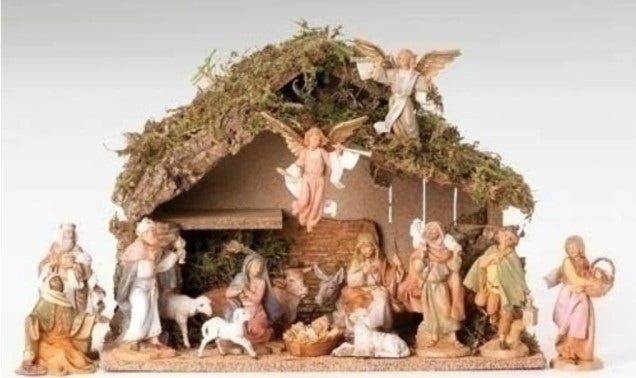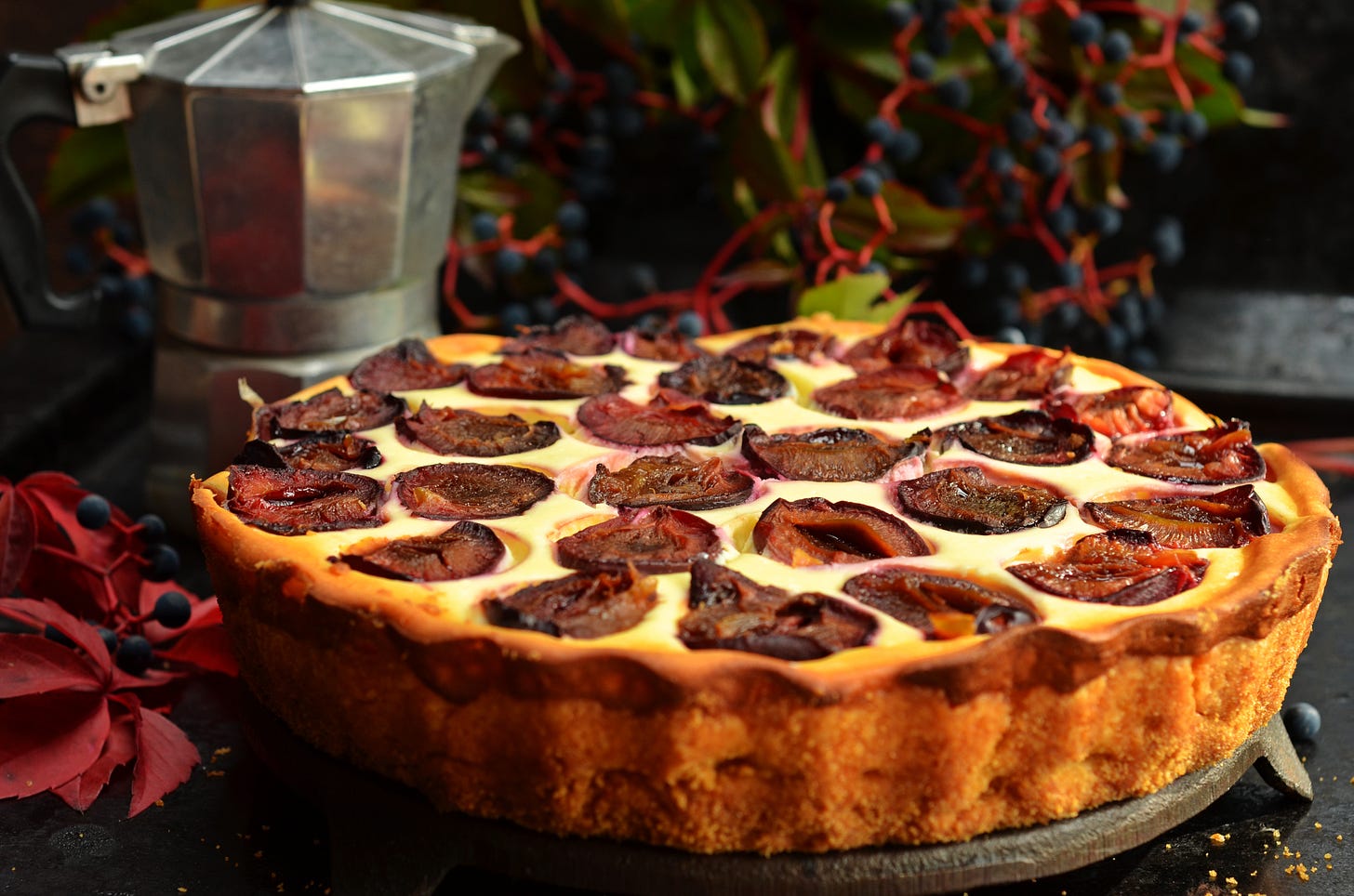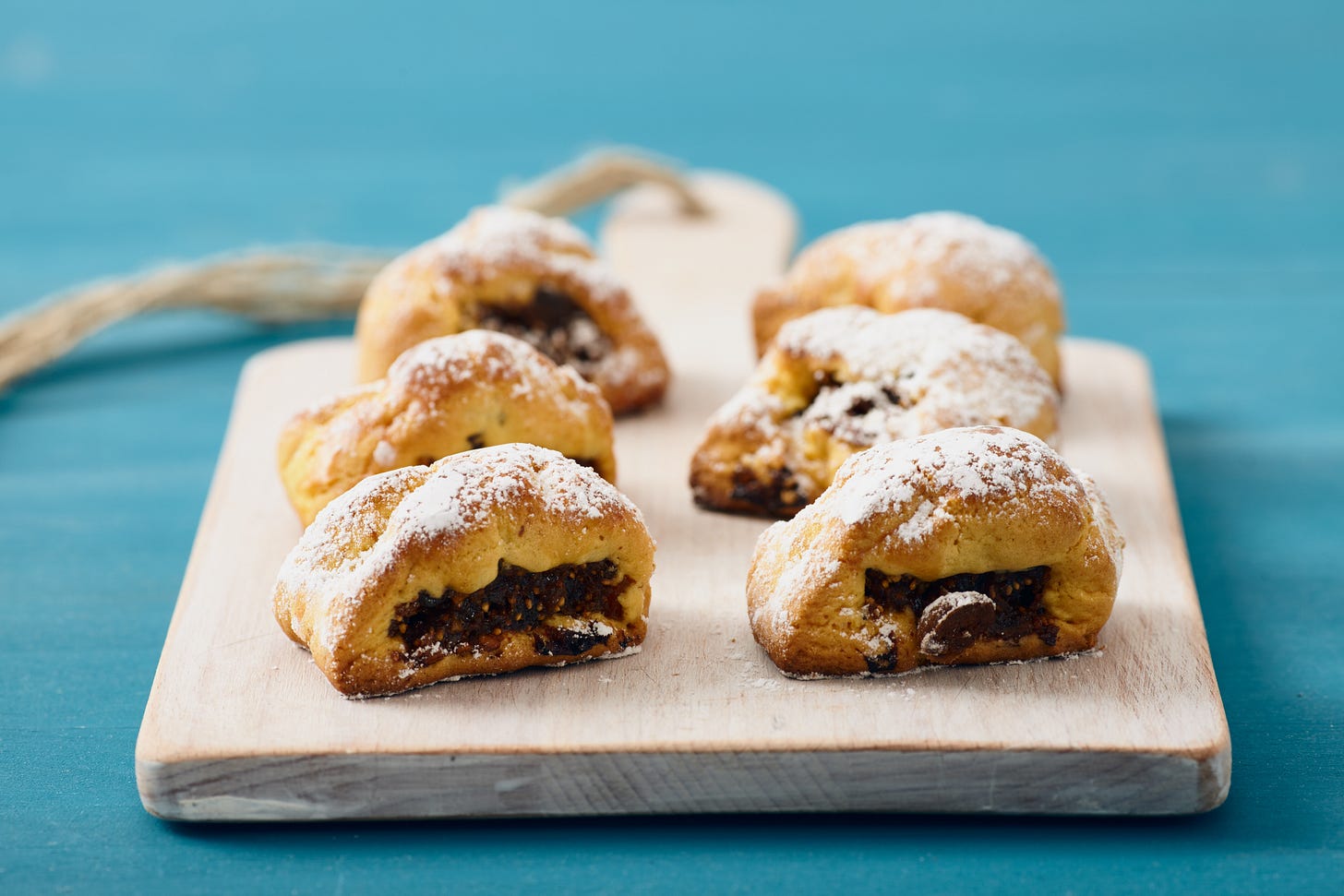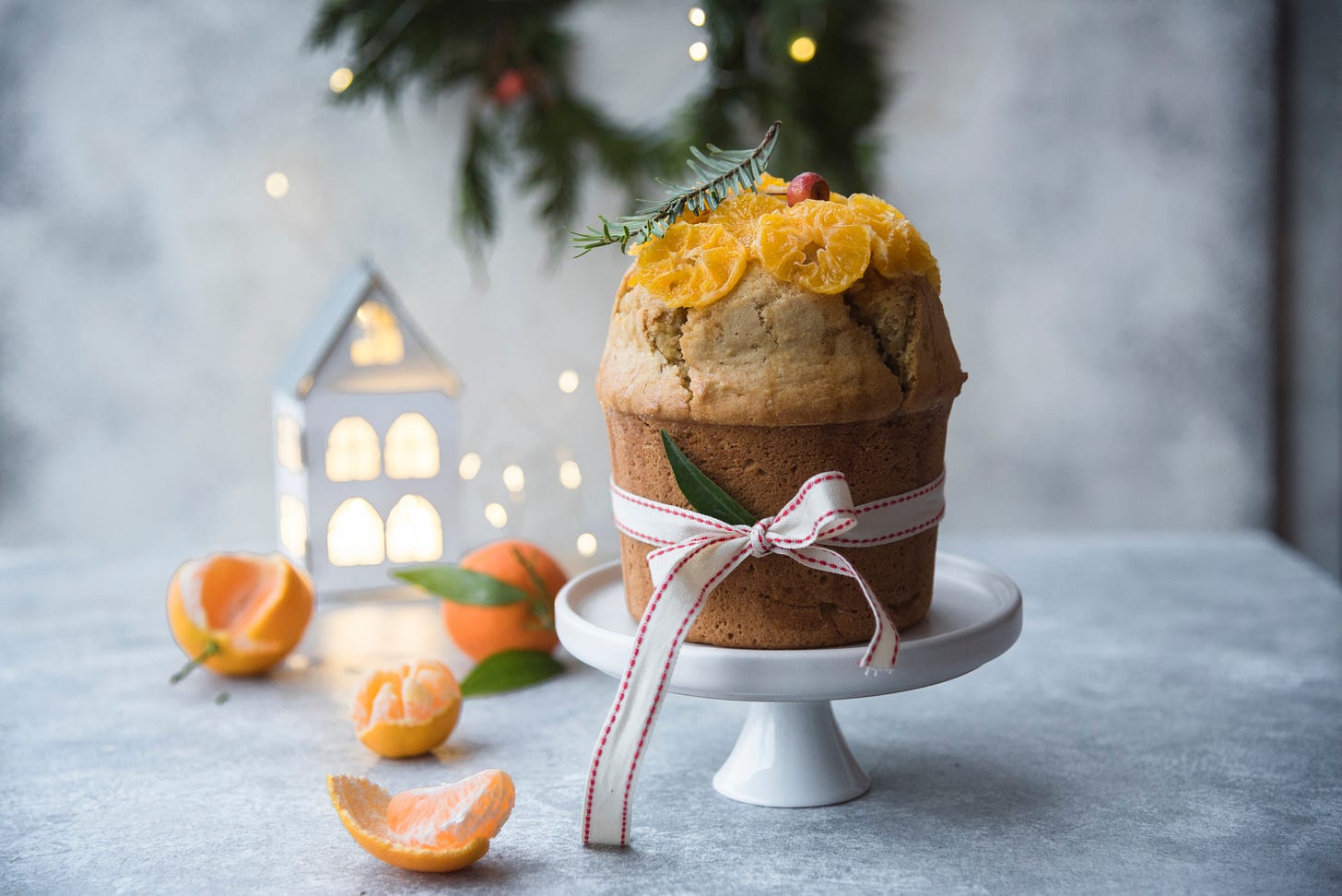Italian Christmas in the Pacific Northwest
Food and other holiday traditions seem to go hand-in-hand for Italians at Christmas
It is the holiday season and what better time to showcase how Italian Americans love to celebrate it!
As far as refreshments go, most meals start with a glass of bubbly Prosecco, a splash of Grappa, or other aperitivo to be drunk while nibbling on antipasti or appetizers. If the prosecco is on the sweet side, some people tone it down with freshly squeezed pomegranate juice.
For many families, a big Christmas Eve meal is a big deal. The tradition of Festa dei sette pesci or Feast of the Seven Fishes is quite popular in among Italian Americans from the southern regions of Italy. Some say it was brought over to America and followed from one generation to the next. Others claim it is a strictly Italian American tradition. Regardless of which camp you agree with, it has continued to be wildly popular. With its roots in Catholicism—when adherents practiced abstaining from eating meat on Fridays or on the day before certain holidays—the foundation of the feast is seven different types of seafood dishes.
While there are no hard rules, the Seven Fishes spread often includes some or all of the following: salted cod (baccalà), spaghetti with clams, linguine with squid ink, a seafood risotto, grilled squid or octopus in a salad, shrimp cocktail, smoked salmon, marinated anchovies, scallops au gratin, braised sea bass, or pan-fried swordfish.
Despite the banquet most families put out, it seems there’s always room for dessert or dolci. These delicacies range from breads such as panettone, panforte, and pandoro. If you’re lucky to have someone in the family who makes it, there’s the famed gubana—a specialty from northeastern Italy around Cividale. If you’re in Vancouver, be sure to pick yours up from Bosa Foods.
Then there’s the nougat-y torrone, the classic tiramisu, biscotti for dipping into or to accompany an after-dinner coffee, liqueur, or vin santo. To round out the sweets with lighter fare, there’s always mandarin oranges or clementines (satsumas), roasted chestnuts, and almonds and walnuts you have to crack open—so satisfying! Even if you’re not from Naples, you can sometimes find struffoli. A collection of fried dough balls, struffoli is either stacked to form a tree or wreath shape and dotted with glittering or colored sprinkles.
There are other traditions enjoyed by Italians besides just the food ones and I’m covering just two others below: Nativity sets and the tree itself.
If you’re a fortunate Pacific Northwesterner who gets a chance to visit Leavenworth— the charming Bavarian-style town in Washington state—be sure to stop by the Kris Kringl store and check out their gorgeous Nativity Sets. They’ve been handmade by the Fontanini family from Bagni di Lucca in Tuscany for over 100 years. Many Italians in the area have a Fontanini set, though mine is not. My husband has two sets, whittled in wood by his great-grandparents and passed down through the generations. Sometimes, simple is okay, too.
As for the tree, it was Queen Margherita who first introduced the Northern European tradition of Christmas trees in Italy, though it didn’t catch on right away for families to bring them inside. Domestic Christmas trees first appeared in the 1960s in Italy, though much earlier than that in America. My mother recalls the Contessa in her town putting mandarins on her Christmas tree. In the winter during wartime, she would often eat one or two on her way to Mass and throw the peels out of her carriage window. My mom, her sister, and other hungry kids would pick them up from the snow and lick them. They were too poor to afford a big batch of them, though each child was usually provided with a single mandarin on Christmas Eve as their only present.
During the Great Depression, one year into the construction of the Rockefeller Center Complex in New York City, the first Christmas tree was erected on Christmas Eve. Italian construction site workers decided to pool their money together to buy the 20-foot balsam fir, decorating the tree with homemade garlands and strings of cranberries fashioned by their families. Ever since, Rockefeller Center has had a Christmas tree, as do most Italian American homes during the holiday. Carpinito Brothers in Kent is a perennial favorite of Seattleites looking to buy a tree.
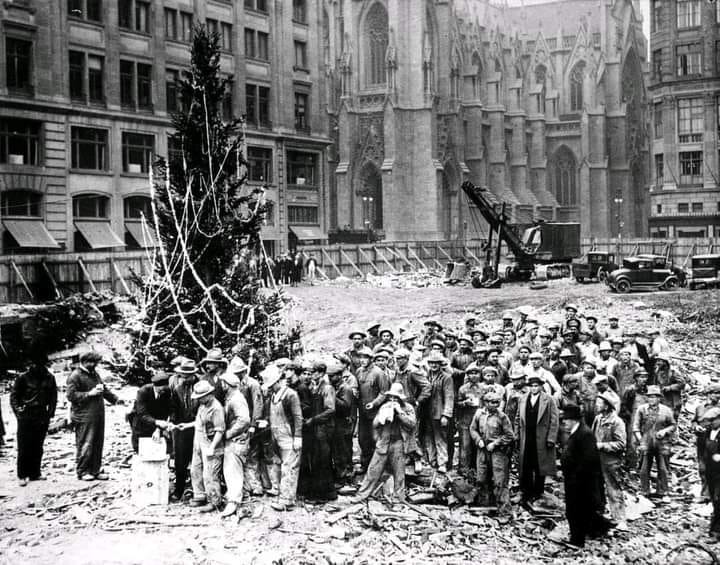
With respect to other trees closer to home, and returning to food (I’m Italian, after all!), there are two that are like gifts that keep on giving: fig and plum trees. Both are grown in the backyards of many Pacific Northwest Italian homes, and the plums even line many a Seattle street. Plumming season is early to mid-September, and though they’re tiny, the trees produce quite a bounty for families, neighbors, and passersby. During my seven-year-stint as a paper girl, I would pick up my newspapers in a lean-to next to a neighbor’s orchard. Mr. Woods was an excellent orchardman who would regularly send us home with a box of his juicy purple gems only to have it returned the next day full of my mom’s own homegrown prunes. Plum jam was a favorite spread on panettone that my mom made in the wintertime—my favorite after-school snack. Plum cake and tarts are holiday favorites for Italians in these parts because they’re not only plentiful, but they remind them of Italy.
Though figs are found ripening at the end of summer, many Italians cook them into a paste and can them or, they dry them, for holiday baking. Cuccidati—or “little bracelet”, also known by some as “buccellati”—are like fig newtons but softer, with a yummy citrusy center that’s sweetened and moistened with figs, dates, nuts, and even a bit of marsala wine or cream sherry. They’re often drizzled with icing and sprinkles, but I like them with little or no drizzle and just a dusting of powdered sugar on top.
If you know of other traditional foods and rituals celebrated by Italians in the Pacific Northwest, drop me a comment and let me know!
To all my subscribers, thank you for being such enthusiastic supporters this year.
Buon Natale e buon anno a voi!
Here’s to a cheerful present, a well-remembered past, and a prosperous year ahead.
P.S.
For other traditions, check out my recently published book, ITALIANS IN THE PACIFIC NORTHWEST (Arcadia Publishing).
Order now at Amazon, Barnes & Noble, Powell’s, and Bookshop.org.
